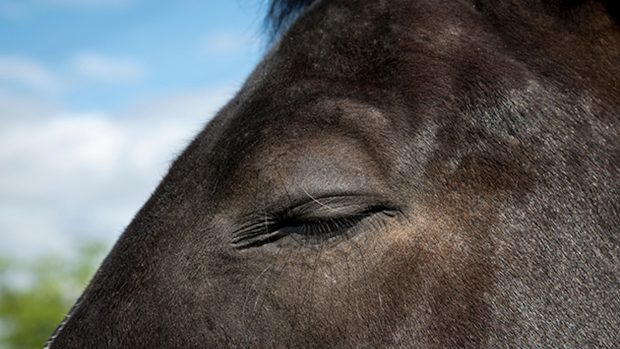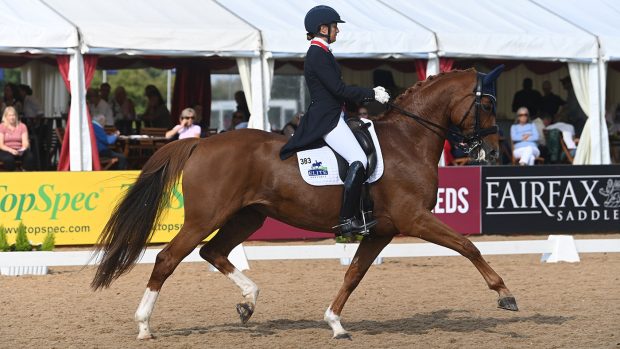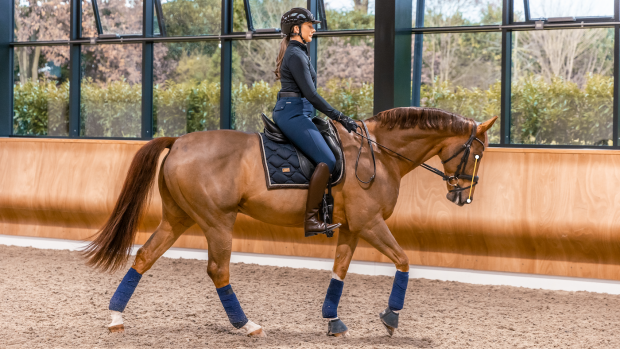Science and education are key to changing views on the tightness of nosebands, industry experts have agreed.
Last year, Equestrian Canada (EC) launched a “noseband measuring pilot project” with the view of implementing a rule that reflects scientific recommendations; that a horse’s noseband “should not be tight enough to prevent the placement of two adult fingers between the noseband and the frontal nasal plane”.
As finger size can vary, the EC equine health and welfare committee has recommended the standardised use of the International Society for Equitation Science (ISES) taper gauge, a tool that precisely measures the space between the noseband and the nasal plane.
During the voluntary project, competition stewards measured the tightness of 550 nosebands across EC-sanctioned competitions using the ISES tool. Data was collected to compare current compliance with the proposed rule, identify where education was needed, record competitor willingness to comply, look at the practicality of using the tool and the training requirements for assessing compliance.
Following the project, EC hosted a webinar in November during which panellists discussed the theme, “How science can be applied to improve noseband tightness in Canadian equestrian sport”. World Horse Welfare chief executive Roly Owers led the meeting, featuring panellists EC stewards Diane Goyette, Susan Legge, Brett Filson, and Allan Ehrlick.
The topic of social licence was raised, with Mr Owers stating that he believes social licence, essentially public acceptance of a practice, will help secure equestrian sport in future.
“Social licence is all about that unwritten contract we have with society today and society is changing all the time, especially its views about animals. We can see that when we think about circuses and zoos, but also within equestrian sport,” he said.
“The way we can protect our sport is by behaving with trust, transparency and building confidence with the public. How we can do that in part, is by having rules and regulations in our sport built on evidence and that evidence in a large part comes from science.”
Ms Legge said the equestrian world is looking at the application of scientific criteria to its relationships with horses with a “higher level of integrity than ever before”.
“EC’s support of the project demonstrates a commitment to improving horse welfare by developing a system of consistent measurement that can be applied easily and accurately. Nosebands can be a useful training tool or they can be a discomfort to the horse, so the more we know about fit and impact on the anatomy, the better we can do for our horses,” she said.
“Being aware of the impact of items like nosebands creates responsible riders and handlers, so for me the ISES gauge is so useful because it demonstrates consistency, which results in trust of the tool and the process. With trust in the fairness of the system comes cooperation, so the ultimate result is not just compliance with a rule but the desire to do better. This is positive science in action.”
Mr Ehrlick, a former Olympic eventer, said he found riders of all ages willing to learn about noseband tightness when he performed measuring at competitions.
“The youngest person was eight and the oldest was 81. The interesting connection is that they were both willing to learn why we were doing this,” he said, adding that when he asked for a noseband to be loosened, he was later thanked by the rider following their competition round.
“Our job is to educate about horse welfare; science is about learning and learning is about teaching. I stewarded 68 days [during 2021] and by the last two shows, I had people lining up saying, ‘Can you measure my noseband?’ They wanted to be seen by others that they were being checked and the word spread, it was quite popular. I think the tool worked.”
The panellists discussed different styles of nosebands and it was agreed that padded crank nosebands, often worn in dressage, were usually found to be done up more tightly. It was noted that the panellists did not find tight nosebands as much at hunter shows, compared to dressage and jumper shows.
“I am concerned that nosebands have been too tight in dressage for years,” said Mr Filson, a senior dressage steward. “[It’s] not across the board, but at the most senior level. I have been at shows where I have had competitors whose nosebands were so tight that when they came out of the ring, I’ve said, ‘If you don’t loosen that, you’re not going back in – end of story.” It’s been a problem for a long time and I’m thrilled we’re doing something about it.
“The education that we started in the summer was helpful. If we have a consistent noseband tool, we’re going to get consistent results, education and positive change. If we have to get to the point of consequences [for nosebands being too tight], then let’s make sure the consequences are very real and enforceable.”
You might also be interested in:

Understanding horses’ happiness key to equestrian sport’s future

Horse sport must demonstrate sound ethics to survive

Subscribe to Horse & Hound this spring for great savings
Horse & Hound magazine, out every Thursday, is packed with all the latest news and reports, as well as interviews, specials, nostalgia, vet and training advice. Find how you can enjoy the magazine delivered to your door every week, plus options to upgrade your subscription to access our online service that brings you breaking news and reports as well as other benefits.




